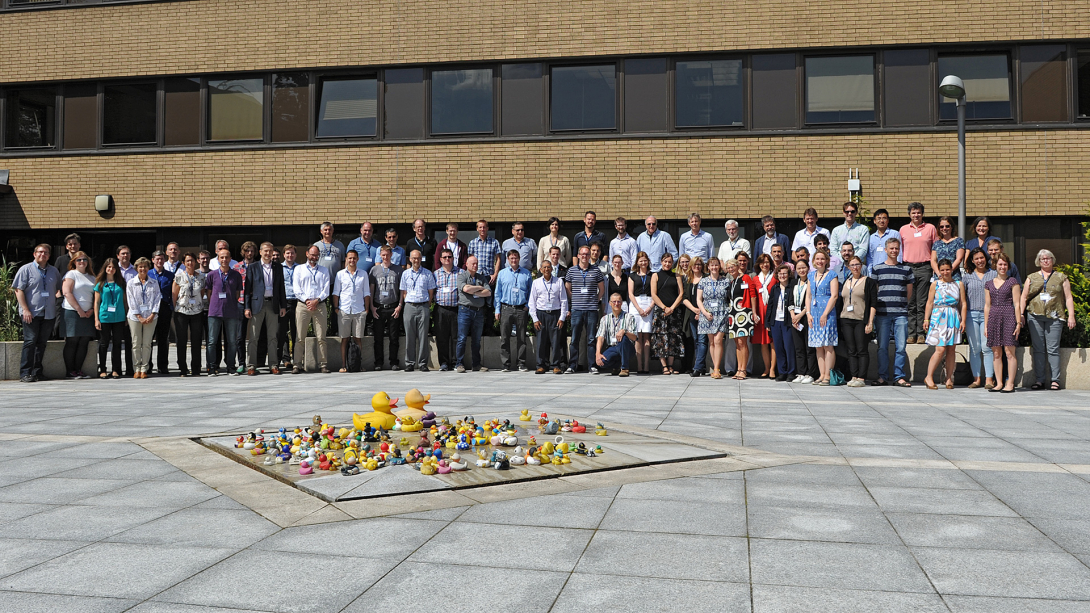
ECMWF | Reading | 12-16 June 2017
A forum to discuss the use and performance of ECMWF's forecasts and related products
“Using ECMWF’s Forecasts” provides a forum for exchanging ideas and experiences on the use of ECMWF data and products. It is open to all ECMWF forecast users in Europe and elsewhere around the world and provides an opportunity to give feedback to ECMWF on forecast performance and on the range of available products, and to learn about ECMWF recent developments of the forecasting system.
2017 theme: "Storms"
Severe storms, whether they happen in winter or summer, have considerable impact on people’s lives and may lead to significant disruptions to services and commercial activities. Strong winds, heavy rain, hail, lightning, blizzards, floods and storm surges are some of the characteristics associated with severe storms. These can lead to damage and destruction of infrastructure, injury and death. Predicting their onset, intensity and track with enough lead time is therefore essential for readiness and damage limitation. Moreover, some applications may require information on regime changes in the extended-range forecast (for example the indication of a stormy period two weeks ahead) or seasonal outlooks.
Numerical weather prediction (NWP) models support (weather) service providers with accurate forecasts and the associated confidence of when a storm will form, where it will strike and how severe it will be. ECMWF has been at the forefront of NWP development for many years and our strategy includes the provision of high quality products for severe weather forecasts. This meeting provided important information on how ECMWF data are used in forecasting severe weather, their quality and any gaps that could be addressed in future developments.
UEF2017 focussed on three thematic areas:
- Processing of model outputs: this session will be dedicated to model output developments to support the forecasting of severe storms and their associated weather phenomena.
- Diagnostics: this session will look at tools or studies that highlight weaknesses and strengths of the ECMWF model in predicting storms.
- Impact: this session will look at the impacts that storms have on sectoral applications.
Presentations
| ECMWF products development Florian Pappenberger (ECMWF) |
||
| ECMWF research plans Irina Sandu (ECMWF) |
||
|
EUMETSAT products and services for monitoring storms: new missions, more data and more meteorological products |
||
|
Processing ECMWF ENS and MOGREPS-G ensemble forecasts to highlight the probability of severe extra-tropical cyclones: examples from the recent storm Doris |
||
| Post processing of ECMWF EPS outputs by using an analog and transference technique to improve the extreme rainfall predictability in Ebro basin (Spain) Robert Monjo (Meteogrid) |
||
| ECMWF perspective: storm forecasts Tim Hewson (ECMWF) |
||
| Storm naming: Does it work? Will Lang (Met Office) and Gerald Fleming (Met Eireann) |
||
| Using ECMWF's forecast to successfully predict and issue warnings for severe storms in Iceland: The forecasters view Helga Ívarsdóttir (Icelandic Met Office) |
||
| How ECMWF has addressed requests from the data users David Richardson (ECMWF) |
||
| Satellite monitoring of the convective storms: forecasters’ point of view Michaela Valachova (CHMI) |
||
| New observation capabilities for storm monitoring – Lightning Imager Jochen Grandell (EUMETSAT) |
||
| Lightning Imager – User readiness Rafal Iwanski (IMGW) |
||
| Nowcasting SAF products and applications Pilar Ripodas (AEMET) |
||
| Catalysing innovation in Wather Science - The role of observations and NWP for the Nowcasting of storms Estelle de Coning (WMO) |
||
| Satellite data assimilation in models Tony McNally (ECMWF) |
||
| Potential for MTG-IRS to impact the forecasting of severe weather cases Kirsti Salonen (ECMWF) |
||
| Diagnostics used in the university research context Christian Grams (ETH Zurich) |
||
| Multi-scale predictability of severe weather Linus Magnusson (ECMWF) |
||
| From Hazards to Impact: Experiences from the Hazard Impact Modelling project Becky Hemingway (Met Office) |
||
| Forecasting and modelling the high impact effects of Wind Storms for the UK transport and European energy sectors Lara Gunn (MetDesk) |
||
| The Challenge - winning idea Dave MacLeod (University of Oxford) |
||
| Storm chasing Paul Knightley (MeteoGroup) |
||
| The ESSL Testbed NWP Data Interface Pieter Groenemeijer (European Severe Storms Laboratory) |
||
|
Beauty and the beast through the eyes of GDACS platform |
||
| Using weather pattern analysis to identify periods of heightened coastal flood risk in the medium to long range David Price (Flood Forecasting Centre) and Robert Neal (Met Office) |
||
| What is ARISTOTLE and how do we use ECMWF forecasts to contribute? Jennifer Rourke (Met Office) |
||
| ecCharts and web services update Cihan Sahin (ECMWF) |
||
| Hazard Impact Modelling for Storms Ken Mylne (Met Office) |
||
| Windy Tomas Slavkovsky (windytv) |
||
| Verification at ECMWF Thomas Haiden (ECMWF) |
||
| Indexes in the context of convective storms Gunnar Noer (Norwegian Meteorological Institute) |
||
| News from C3S: ERA5 Hans Hersbach (ECMWF) |
||
| Seasonal forecasting activities at ECMWF Laura Ferranti and Anca Brookshaw (ECMWF) |
||
| Outcomes | ||
| Conclusions |
Posters
| Fu Jiolan (National Meteorological Center CMA) | |
| Kornél Kolláth (Hungarian Meteorological Service) | |
| Gian Paolo Minardi (ARPA Lombardia) | |
| Lionel Moret (MeteoSwiss) | |
| Rosen Penchev (BULATSA) | |
| Javier Rodriguez (AEMET) | |
| Thomas Schumann (Deutscher Wetterdienst) |
